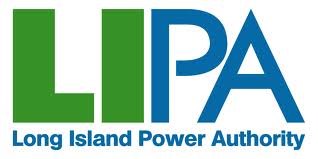Hurricane Sandy devastated the East Coast two weeks ago, with New Jersey and Long Island hit especially hard. I live on Long Island, so I have had a front row seat to see what happened and, more importantly, how the restoration has been occurring.
Hurricane Sandy devastated the East Coast two weeks ago, with New Jersey and Long Island hit especially hard. I live on Long Island, so I have had a front row seat to see what happened and, more importantly, how the restoration has been occurring.
Long Island gets its power from a public utility called The Long Island Power Authority, or LIPA. LIPA had been criticized heavily for how it behaved during Sandy’s opening act last year, Irene. Therefore, people already had pretty low expectations for how LIPA would act during this storm, and, to say the least, these expectations proved to be woefully inaccurate; it was worse than anyone could possibly believe.
I’m not going to talk about whether or not they managed the actual reconstruction effectively; I’m neither an electrical engineer nor a disasters expert. However, I do know a thing or two about communications and, I feel, it is in this area that LIPA proved itself to be woefully inadequate.
In the wake of the storm, people turned to social media to get information from LIPA because official pronouncements were rare and their website was infrequently (and inaccurately) updated. Therefore, social media was one of the only outlets to get information. However, when it comes to give this information, LIPA had a lot to learn.
Here’s an example: people who lived in flood zones had to get their homes examined by a licensed electrician to see if there were any repairs needed before power could be safely turned on. A person could either wait for a free, LIPA electrician or they could hire one on their own to expedite the process. Once the electrician cleared the house (either because the repairs were made or because there weren’t any needed), the electrician or homeowner would either Fax or email a form to LIPA to say they’re ready for power. Sounds simple, right?
On November 5, LIPA made a post saying that people whose homes were damaged by the storm would have to get an electrical inspection and inspection certificate before power could be turned on. They implied that the homeowner had to hire their own electrician and that the electrician should contact LIPA directly.
On November 6, the need for inspections was amended so that you only need an inspection if your panels, wires, or outlets were submerged.
On November 7, they said that there were now free inspectors going door-to-door, so people would not have to hire their own contractor. Now the inspections were required based on your physical location, usually south of certain streets that demarcated a flood zone. They said people could still hire their own electrician, but they would have to submit a certificate to LIPA. There was no way mentioned on how to actually submit this certificate, and many people were confused and asked how to submit it. They implied that the word of the electrician would be the certificate, since they did not include any details on the certificate.
On November 8, LIPA released an official certificate to the public.
On November 9 LIPA finally released the fax number and email address were people could send their certificate. Many people complained that the fax and/or email address wasn’t working.
To sum it up: they changed requirements three times, gave out information in piecemeal, and generally added to the confusion over an already chaotic period.
As you can imagine, this was a social media nightmare: people in the comments complained, unanswered, that they were utterly confused about what they should be doing and what they should do to get their power back on. LIPA seemed to be changing the plans every day, and there didn’t seem to be anyone that had a clue as to what to do.
One positive from LIPA’s disaster is that it shows what a company needs to do during an emergency. So, if you don’t want to be like LIPA, here’s what you need to do:
- Have a plan ahead of time. LIPA was utterly blindsided by the storm, and it shows. People had no idea what was going on or what they should.
- If you don’t have a plan, get your story straight. The constantly evolving requirements caused massive confusion, not to mention that important pieces of information (such as what to do with the form) was withheld for days.
- Respond to your Facebook Comments. If people are asking questions, that means they’re confused. It was clear that LIPA was ignoring comments, since, if they had read them, they would have been able to see what people needed to know.
Crisis communications is never easy: people are confused, time is tight, and there’s a lot to be done. Still, with a solid, concrete plan, you can mitigate the damage done.
Please contact online marketing agency fishbat for a free consultation.

